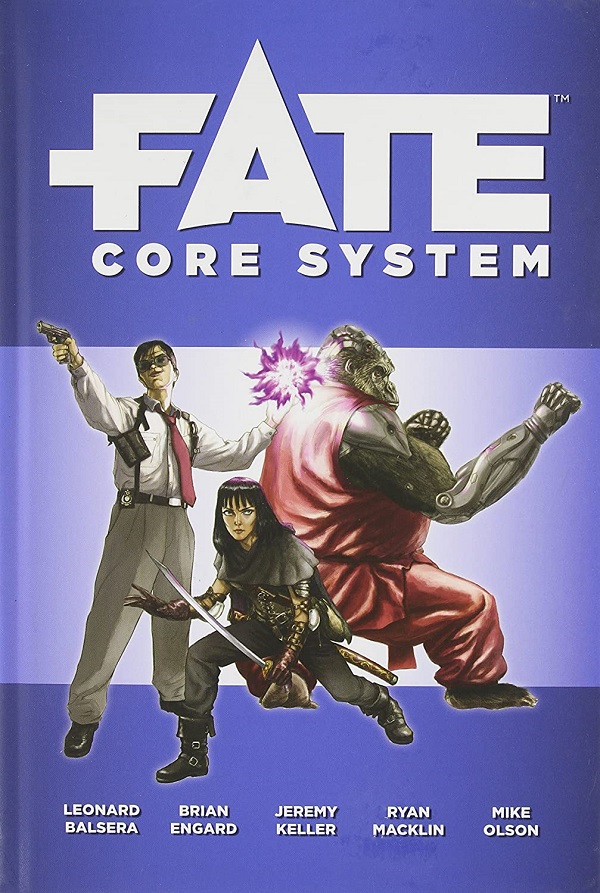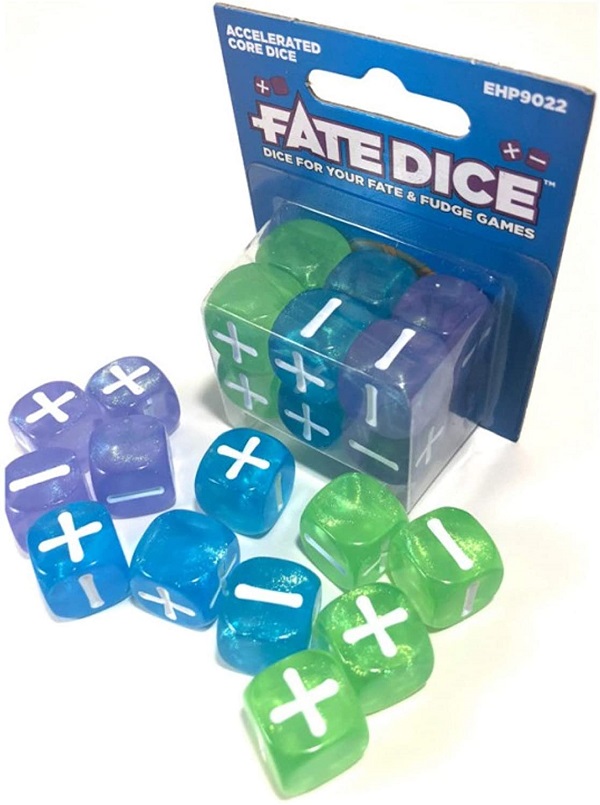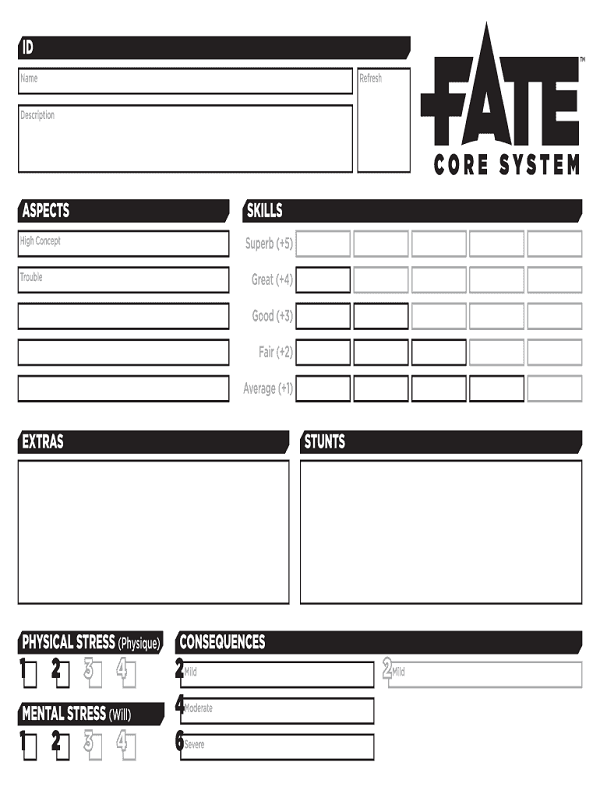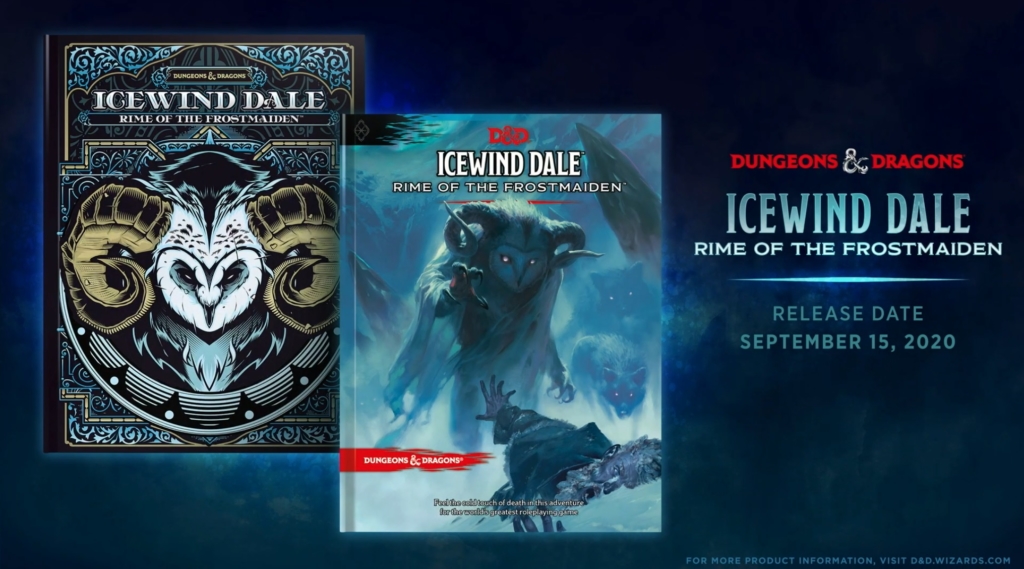RPG Spotlight: FATE
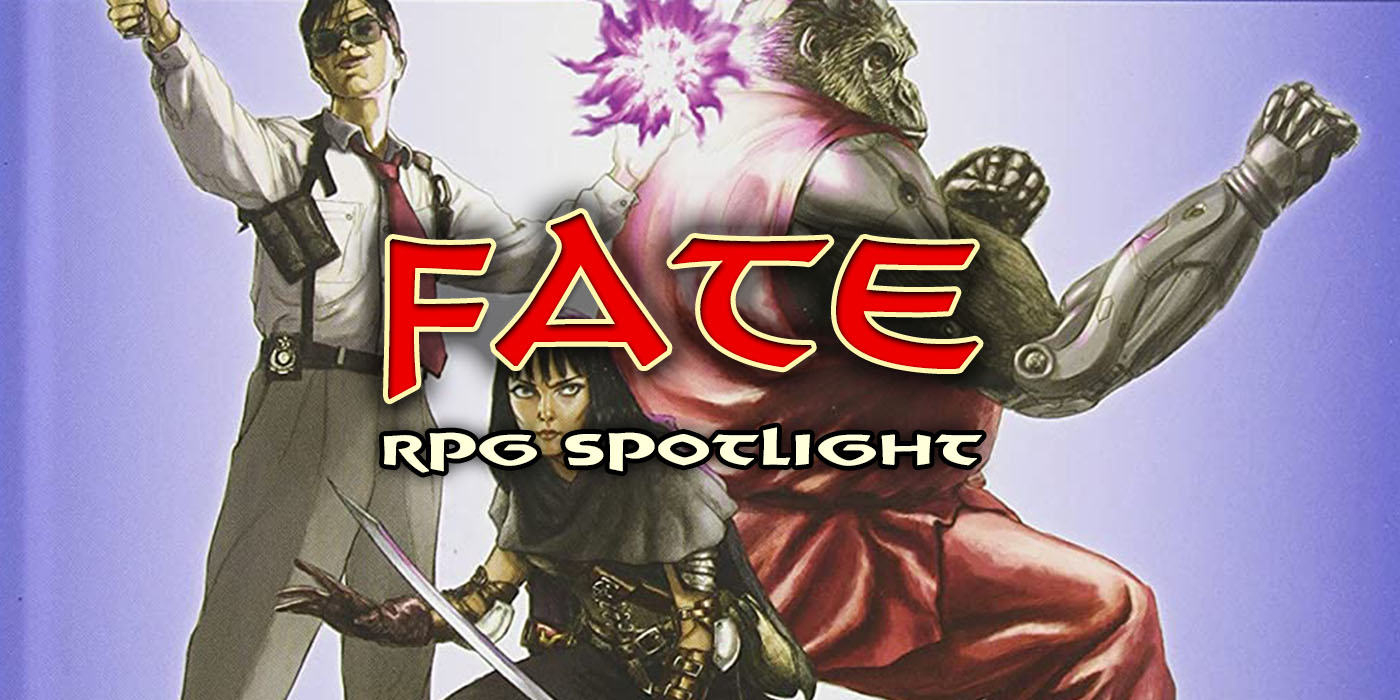

Not every generic roleplaying game experience has to be math heavy and full of crunch. Some generic systems can be simple and fun. Some systems can be FATE.
FATE is a generic role-playing system, with no set genre or setting it is a entirely customizeable game for any story from science fiction to high fantasy to Pokemon… The FATE campaign I played was Pokemon.
Based on the Fudge system, FATE was originally an acronym for “Fudge Adventures in Tabletop Entertainment” and was later changed to “Fantastic Adventures in Tabletop Entertainment.” But now it is simply known as FATE with no acronymous meaning. The open nature of the FATE system has a number of published games in a variety of genres as well as easy to translate skins and supplements to use to create the bespoke world your story needs. And, despite being an open and generic system, FATE doesn’t have the same annoyances and pitfalls as many of the other generic systems. FATE is a simple system to understand, play, and GM. It’s open without all of the crunchiness, number crunching, or complicated charts as, for example, GURPS.
Gameplay involves a set of specialized D6 consisting of two -‘s, two +’s and two blank sides each. Players roll 4 of these dice, add the +’s and -‘s, add your skill and determine if you have beaten the set difficulty level. For example, imagine your character is trying to jump across a ravine, has a +3 in athletics, and you roll – + + 0. The dice roll equals a +1 (1+1-1+0=1) and your +3 makes it a final total of a +4.
This system of pluses and minuses means that it is entirely possible to roll a -4 and even after adding your skill have a negative number as your final total. This means that difficulty levels are always going to be fairly low. That +4 for example, would almost definitely pass in most circumstances.
Character creation isn’t a particularity difficult part of the game mainly focusing on picking the variety of character you want to play and filling in the blanks. There is a standard list of 18 skills of which your character will have 10 as well as a point value attributed to it. These skills may vary between flavors of FATE. Then there are Aspects, key descriptors of your character that you can invoke to give yourself a boost during the game. Should your roll not go well, you can invoke a relevant Aspect, explain how that aspect of your personality or background will help you in this situation, and you will earn yourself a re-roll or an additional +2 to your final roll. This is called using Fate Points, and you have a pool of 3 Fate Points to use per game session. Finally, there are Stunts, or special ways your character can bend the rules of the game to suit them. These can come in the form of an extra benefit from a skill, a narrowly focused bonus, or a special move.
FATE is a system that circles around deliberate action where inaction will cause the entire game to come grinding to a halt. Every aspect of the game wants you to actively work toward problem solving and goals, and in doing that it has made for a cinematic and sometimes very comical system to play within. Wait and see never works, but sometimes yelling “Leeroy Jenkins!” and going for the gold does. If you fail, FATE gives you a way to try again – assuming you can come up with a creative enough use for your Fate Points – and many times you can enjoy a partial success or a failure with a silver lining.
If you’re looking for a system that’s easy to run and play that will let you do just abut anything you want and want to give FATE a try, you can find it here on the: Evil Hat Productions official site.
FATE Core System
Have you played the FATE system? What kind of game did you create? Do you prefer crunchy generic games or simple ones? Let us know in the comments!
Happy Adventuring!

